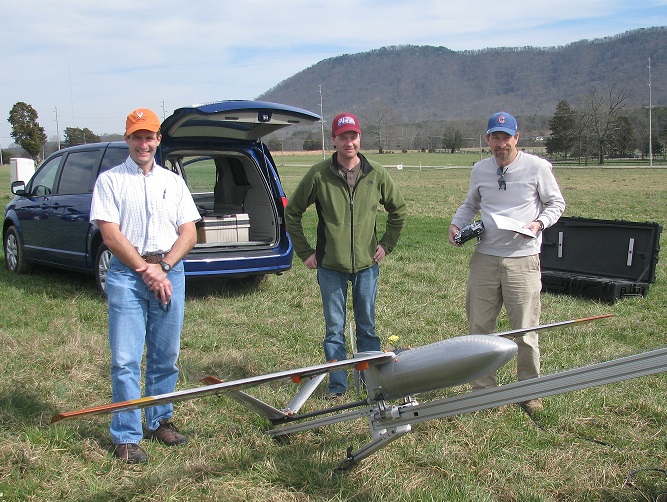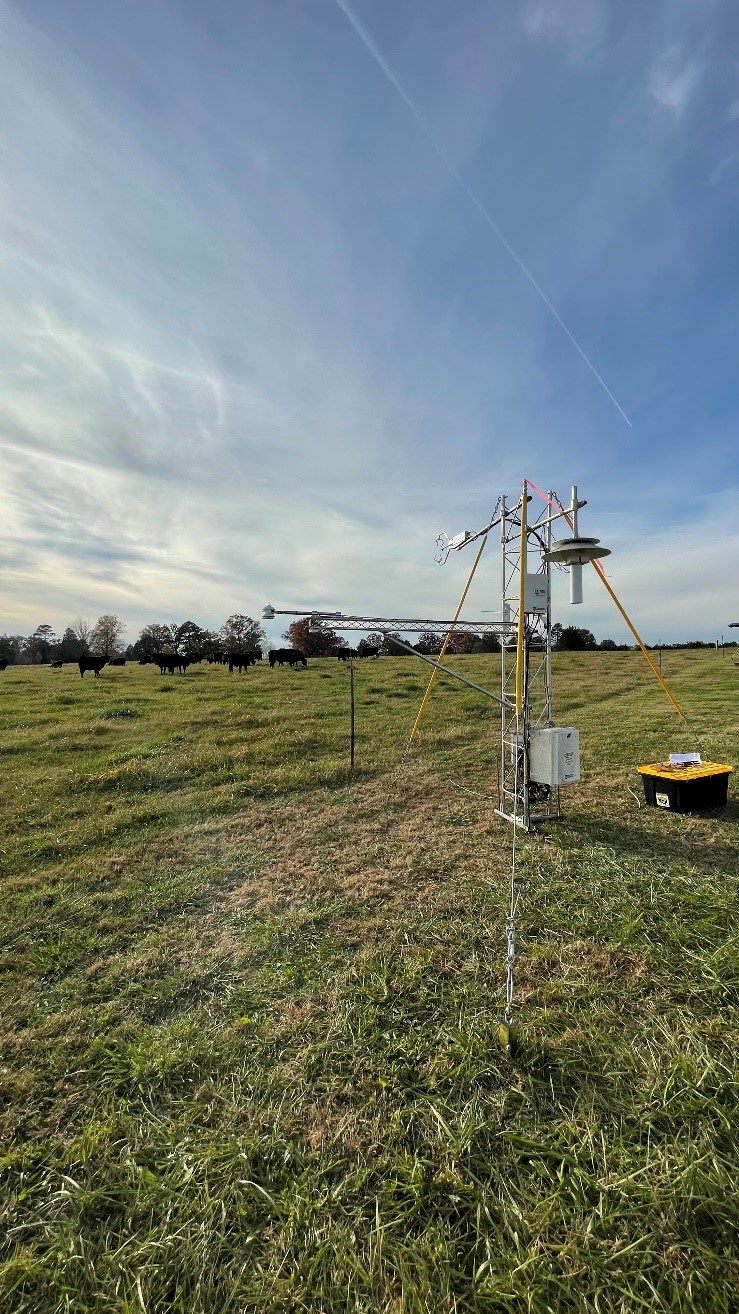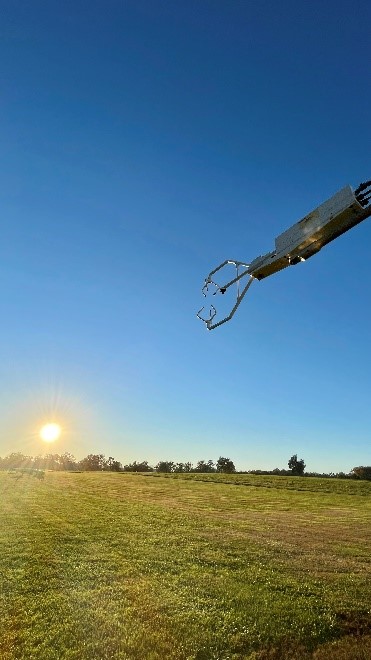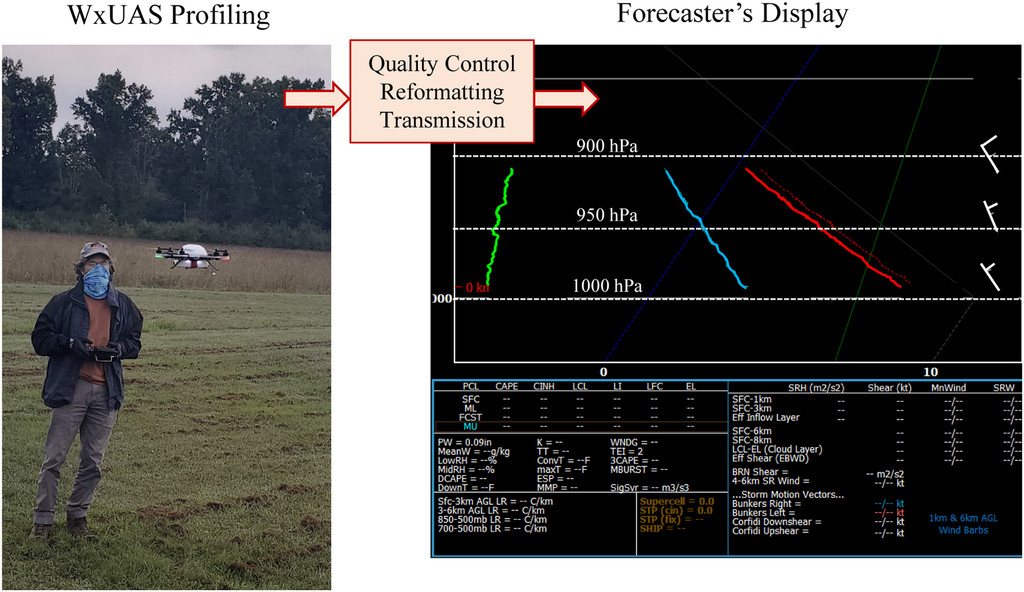ARL Weekly News – November 12, 2021
| Recent Events |
House Mountain Field Experiment
Travis J. Schuyler, a post-doctoral research associate is leading a field experiment at House Mountain Radio Control (HMRC) near Corryton, TN to evaluate the validity of fast-response temperature, relative humidity, and 3-dimensional wind speed measurements collected via a small uncrewed aircraft system (sUAS) for calculations of sensible and latent heat flux. ATDD has worked extensively to evaluate the suitability of these sensors for integration into its BlackSwift Technologies (BST) S2 fixed-wing sUAS to calculate sensible and latent heat flux. However, fast-response temperature, moisture, and wind measurements collected via sUAS have not been referenced against known standards in the field and must be compared with traditional observation platforms (i.e. flux towers) for validation. Thus, the BST S2 will be flown adjacent to flux towers at HMRC to determine the validity of measurements for calculating fluxes obtained using sUAS in a real-world environment.

ATDD’s Flight Team with the BlackSwift S2 sUAS on its catapult. Credit: NOAA


National Atmospheric Deposition Program Meetings
Winston Luke concluded his tenure as the Chair of the National Atmospheric Deposition Program’s (NADP’s) Network Operations Subcommittee (NOS). NADP is a cooperative program comprised of five monitoring networks and over 500 independent sites that provide long-term, high-quality air and precipitation measurements to evaluate atmospheric deposition over space and time. The NOS is one of two technical subcommittees in the Program; the other is the Education and Outreach Subcommittee (EOS). NADP’s Executive Committee instructs program direction based on recommendations from its technical and science subcommittees. Existing science subcommittees include Critical Loads of Atmospheric Deposition (CLAD); Total Deposition (TDep); the Aeroallergen Monitoring Science Committee (AMSC); and Mercury in the Environment and Links to Deposition (MELD).
As NOS Chair, Dr. Luke was charged with drafting and coordinating block and session agendas, soliciting input from NADP members for topics of discussion, and hosting and facilitating the online meetings. NOS provides scientific and technical guidance for the operation and maintenance of NADP’s monitoring networks to ensure the collection and dissemination of high-quality, policy-relevant atmospheric chemistry and deposition data. Dr. Luke also worked with Dr. John Walker (USEPA), the current Executive Vice-Chair, in organizing the annual NADP Fall Science Symposium, The late-October Symposium was attended by approximately 150 people and comprised over seventy presentations by U.S. and international scientists and students.
Interagency Monitoring of Protected Visual Environments (IMPROVE) Steering Committee meeting
Xinrong Ren, Daniel Tong, and Rick Saylor attended the Interagency Monitoring of Protected Visual Environments (IMPROVE) Steering Committee meeting on November 9-10, 2021. Dr. Tong gave a presentation, entitled “Long-term dust trend and association with Valley fever infection”. The presentation summarizes the long-term dust climatology in the western United States based on a comprehensive dust identification method and continuous aerosol observations from the IMPROVE network and its correlation with the Valley fever, infectious disease caused by inhaling soil-dwelling fungus. During the presentation Dr. Tong also highlighted the critical contribution of IMPROVE to monitoring long-term dust trend during climate change and stressed the necessity of continuous observations at strategically important locations. There were ~50 participants in the workshop from state and federal agencies, academia, and nonprofit organizations. Most of the attendees are involved activities in the operations, data analysis, and management of the IMPROVE monitoring network. As one of the IMPROVE Steering Committee members representing NOAA, Dr. Ren was involved in the discussion of the IMPROVE business, including proposals to establish an IMPROVE charter to contemplate the future structure and function of the Steering Committee, and to implement subcommittees/subgroups to enhance the usage of the data from the IMPROVE network.
| Recent Publications |
The Status and Future of Small Uncrewed Aircraft Systems (UAS) in Operational Meteorology
Pinto, J. O., O’Sullivan, D., Taylor, S., Elston, J., Baker, C. B., Hotz, D., Marshall, C., Jacob, J., Barfuss, K., Piguet, B., Roberts, G., Omanovic, N., Fengler, M., Jensen, A. A., Steiner, M., & Houston, A. L. (2021). The Status and Future of Small Uncrewed Aircraft Systems (UAS) in Operational Meteorology, Bulletin of the American Meteorological Society, 102(11), E2121-E2136. Retrieved Nov 15, 2021, from https://journals.ametsoc.org/view/journals/bams/102/11/BAMS-D-20-0138.1.xml
Abstract: The boundary layer plays a critical role in regulating energy and moisture exchange between the surface and the free atmosphere. However, the boundary layer and lower atmosphere (including shallow flow features and horizontal gradients that influence local weather) are not sampled at time and space scales needed to improve mesoscale analyses that are used to drive short-term model predictions of impactful weather. These data gaps are exasperated in remote and less developed parts of the world where relatively cheap observational capabilities could help immensely. The continued development of small, weather-sensing uncrewed aircraft systems (UAS), coupled with the emergence of an entirely new commercial sector focused on UAS applications, has created novel opportunities for partially filling this observational gap. This article provides an overview of the current level of readiness of small UAS for routinely sensing the lower atmosphere in support of national meteorological and hydrological services (NMHS) around the world. The potential benefits of UAS observations in operational weather forecasting and numerical weather prediction are discussed, as are key considerations that will need to be addressed before their widespread adoption. Finally, potential pathways for implementation of weather-sensing UAS into operations, which hinge on their successful demonstration within collaborative, multi-agency-sponsored testbeds, are suggested.

Meteomatics WxUAS being flown during demonstration testbed to assess their use in operational meteorology. Data are relayed to a ground station, postprocessed with quality control software and reformatted before transmission to the WFO in Morristown, TN, in real time. (right) WxUAS data can be displayed at the WFO using SHARPpy (Blumberg et al. 2017) display tool. Observations shown are dew point temperature (green), wet bulb temperature (blue), air temperature (red), and wind speed and direction (barbs on right) and are used to support the development of short-term forecasts.

